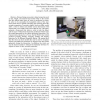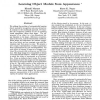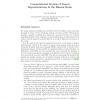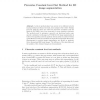180 search results - page 8 / 36 » Learning to Recognize Three-Dimensional Objects |
125
click to vote
CVPR
2010
IEEE
15 years 8 months ago
2010
IEEE
Detecting objects in cluttered scenes and estimating articulated human body parts are two challenging problems in computer vision. The difficulty is particularly pronounced in ac...
ICRA
2009
IEEE
15 years 6 months ago
2009
IEEE
— Human beings can perceive object properties such as size, weight, and material type based solely on the sounds that the objects make when an action is performed on them. In ord...
111
click to vote
AAAI
1993
15 years 1 months ago
1993
We address the problem of automatically learning object models for recognition and pose estimation. In contrast to the traditional approach, we formulate the recognition problem a...
123
click to vote
ALT
2008
Springer
15 years 8 months ago
2008
Springer
Abstract For many centuries scientists have wondered how the human brain represents thoughts in terms of the underlying biology of neural activity. Philosophers, linguists, cogniti...
147
click to vote
SCALESPACE
2007
Springer
15 years 6 months ago
2007
Springer
Level set methods have been proven to be efficient tools for tracing interface problems. Recently, some variants of the Osher- Sethian level set methods, which are called the Piece...



